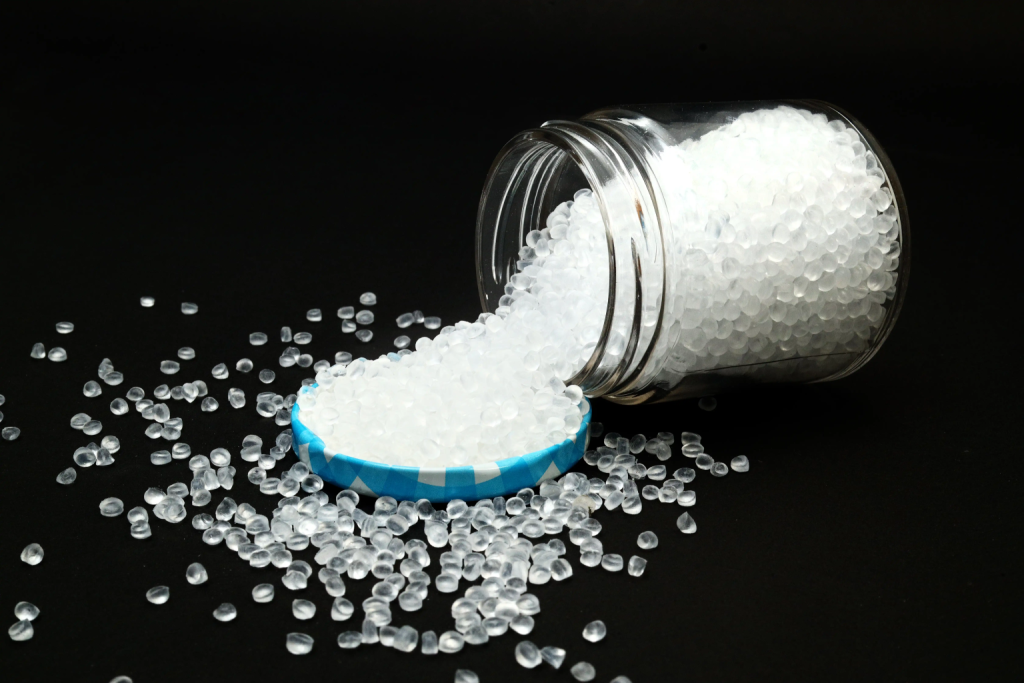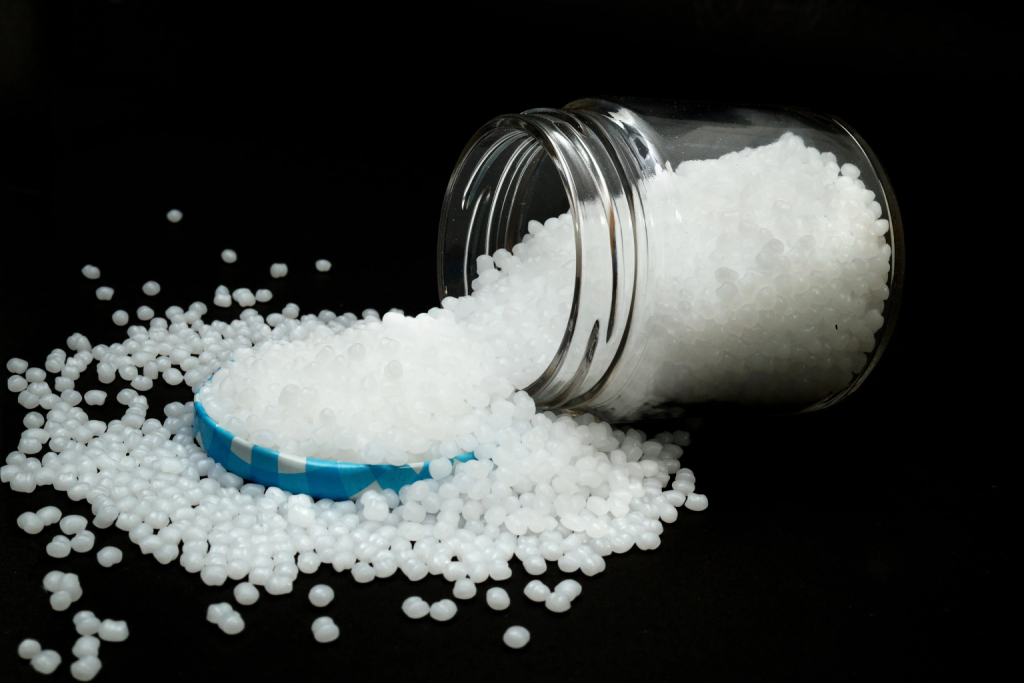ETHYLENE VINYL ACETATE (EVA)

EVA (Ethylene Vinyl Acetate) is a copolymer made from ethylene and vinyl acetate. It is a soft, flexible, and rubber-like material known for its excellent shock absorption and cushioning qualities.
EVA is produced through a high-pressure polymerization process, where ethylene and vinyl acetate monomers are combined. This results in a material with a low melting point, making it easy to process and shape into various forms.
The main advantage of EVA is its high flexibility and elasticity, which makes it ideal for applications requiring effective shock absorption and cushioning, such as shoe soles and padding. EVA is also lightweight, waterproof, and offers strong resistance to UV radiation and chemicals.
EVA’s versatility extends to its ease of coloring and molding, and it can be blended with other materials to improve its properties. For instance, adding rubber particles enhances its toughness and impact resistance.
Despite its many benefits, EVA has some limitations. It has relatively low tensile strength and may deform under extended use or exposure to high temperatures. It can also release toxic fumes when burned.
In conclusion, EVA is a highly adaptable and widely used material, especially valued for its cushioning and shock-absorbing properties in various applications.

EVA (Ethylene Vinyl Acetate) is a copolymer made from ethylene and vinyl acetate. It is a soft, flexible, and rubber-like material known for its excellent shock absorption and cushioning qualities.
EVA is produced through a high-pressure polymerization process, where ethylene and vinyl acetate monomers are combined. This results in a material with a low melting point, making it easy to process and shape into various forms.
The main advantage of EVA is its high flexibility and elasticity, which makes it ideal for applications requiring effective shock absorption and cushioning, such as shoe soles and padding. EVA is also lightweight, waterproof, and offers strong resistance to UV radiation and chemicals.
EVA’s versatility extends to its ease of coloring and molding, and it can be blended with other materials to improve its properties. For instance, adding rubber particles enhances its toughness and impact resistance.
Despite its many benefits, EVA has some limitations. It has relatively low tensile strength and may deform under extended use or exposure to high temperatures. It can also release toxic fumes when burned.
In conclusion, EVA is a highly adaptable and widely used material, especially valued for its cushioning and shock-absorbing properties in various applications.
Benefits of Ethylene Vinyl Acetate (EVA)

Flexibility and Elasticity

Excellent Shock Absorption

Electrical Insulation
One stop solution for polymers
Supplying high-quality polymers to fuel your business success!
Get in touch with us today to discover more about our premium polymer supplies!










